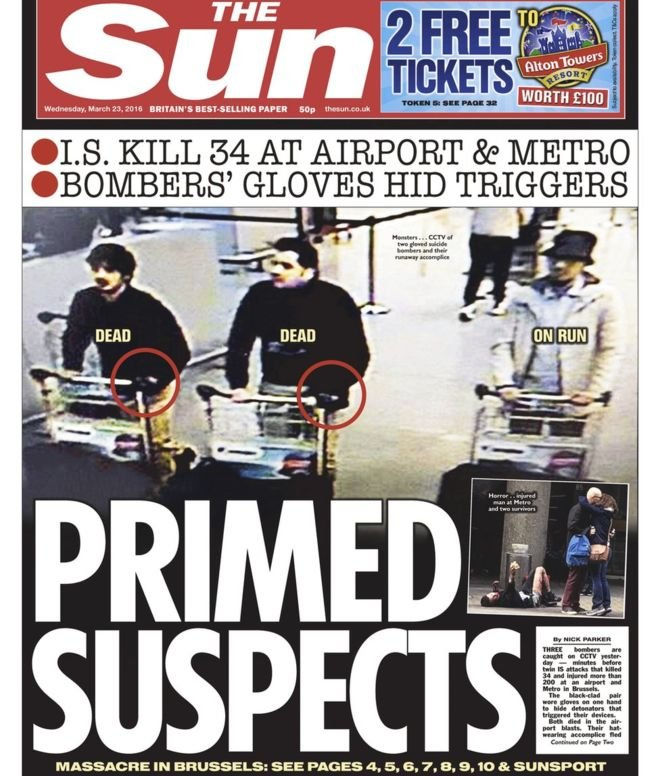Spreading of moral panic
- sievutea

- Apr 1, 2016
- 2 min read

“Moral panics arise, the literature tells us, during troubled, difficult, disturbing, threatening times”(Goode and Ben-Yehuda, 1994, p32)
One of the most recent terror attacks have happened in Brussels, over three hundred people have been injured and thirty-two have been left dead excluding the suicide bombers. The bombers deployed the bombs at two locations – the airport and a metro station. The damage left a great impact on the city and it’s people. The news travelled fast and once the CCTV footage of the bombers become available most newspapers used it as a front-page picture.
The horror and the reality that these terror attacks recently have been increasing contributes a lot to the moral panic that is spreading around the world. The front page of ‘The Sun’ and the use of this picture, which included the three terrorists who were walking casually in public only illustrate how normal the suicide bombers looked like. They could have been anyone around you in the public.
Also the use of labels on the picture that say “dead” and “on run” only increases the uneasiness of the reader as one is still hiding and is still a threat.
Bullet points at the top of the picture help summarize the most important pieces to the story, yet the bold red bullet point mark somewhat sets the reader uneasy as if it resembles blood, death and leaving them feeling as if they have a target on their back. This use of bold text and pictures taken shortly before the attacks happened in the front-page only creates more panic and more alertness to who is around you.
The smaller picture of the victims and survivors of the attack adds human element to the story encouraging people to buy the publication to read about the victims, while still keeping focus on the main news which is that the suspects of the crime have been announced and one is still on the run.


Comments